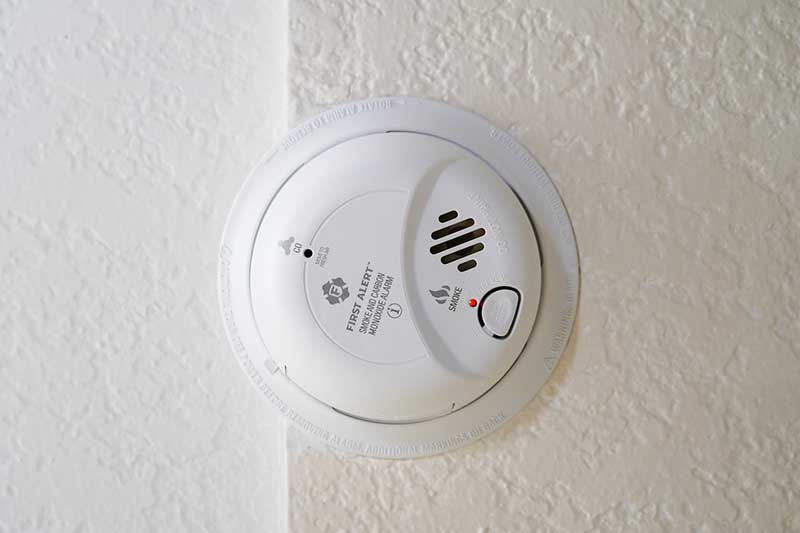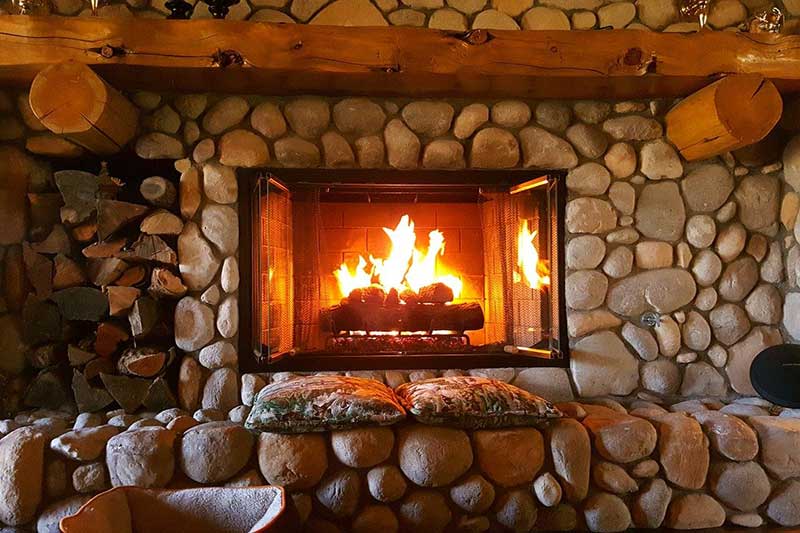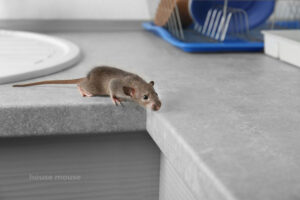This page may contain affiliate links. If you click and buy, we might get a small commission at no cost to you.
With the colder weather approaching and your fireplaces getting more use, you may be asking yourself “do wood burning fireplaces give off carbon monoxide?” The short and straight-to-the-point answer is yes. While it is true that fireplaces do give off carbon monoxide (CO), they are not the only culprit you probably have in your home that pose the same risk.
Furthermore, the carbon monoxide produced by wood burning fireplaces won’t reach dangerous levels in your home if you take the proper precautions to keep yourself and your family safe from this dangerous gas.
What is carbon monoxide?
This colorless and odorless gas is a byproduct of combustion, and is produced by burning fuels, such as wood, gasoline, charcoal, and propane. Engines and appliances that are in an improperly vented or used in tightly sealed space can cause carbon monoxide to build up to dangerous levels, which pose a serious and deadly risk to all who inhale the gas.
Do wood burning fireplaces give off carbon monoxide?
As mentioned above, wood-burning fireplaces do produce carbon monoxide. As the fire is burning, it is removing oxygen from the air and replacing it with carbon monoxide.
But that doesn’t mean you have to get rid of your fireplace. There are ways you can continue to heat your home with a wood burning fireplace and still keep yourself safe from carbon monoxide poisoning.
Protect your family with this First Alert carbon monoxide detector—trusted, battery-backed, and built for reliable early warning.
How can I prevent carbon monoxide from wood burning fireplaces?
The best way to prevent carbon monoxide is to ensure the wood burning fireplace is properly vented. The damper of the fireplace should be opened every time the fireplace is used. Furthermore, the fireplace should be serviced and inspected yearly to ensure the appliance is functioning properly.
This also goes for your chimney, as it should be cleaned and inspected every year as well. Any issues with the fireplace, its chimney or vent will need to be addressed as soon as possible since carbon monoxide can quickly build up in your home.
Do I need carbon monoxide detectors near the wood burning fireplace?
Installing carbon monoxide detector like this one near the wood-burning fireplace, as well as on every level of your home, will go a long way to protect against carbon monoxide poisoning. This is especially important since you cannot see or smell carbon monoxide, and people can have irreversible brain damage or die before anyone even knows there is a problem.
Like a smoke detector, the carbon monoxide alarms will sound if the CO reaches dangerous levels in your home. The alarm will beep when there is an issue, such as if a battery is low or it detects carbon monoxide.
Make sure to familiarize yourself with your specific detectors’ alarm to know what its beeps mean. CO detectors should also be checked regularly to ensure they are working. According to First Alert, CO detectors should be checked at least every month, and batteries should be replaced every 6 months. While each brand and type of carbon monoxide detector will have their own lifespan, detectors typically last about 5 years.

What are the symptoms of carbon monoxide poisoning?
Exposure to carbon monoxide, even at low levels, can result in dangerous and potentially deadly damage to your brain and organs. And while it is dangerous to everyone who breaths in carbon monoxide, children, pregnant people, the elderly, and those suffering with heart disease are at a greater risk at even the lowest of levels.
The symptoms of carbon monoxide poisoning include:
- Headache
- Dizziness
- Nausea
- Fatigue
- Shortness of breath
- Blurred vision
- Vomiting
- Disorientation and/or confusion
- Loss of consciousness
Knowing the symptoms associated with carbon monoxide poisoning is just one way to help keep your family safe. If you suspect someone has carbon monoxide poisoning, immediately move them to fresh air, such as outside the home, and then call 911 or seek medical assistance.
Quick facts about carbon monoxide
- Carbon monoxide is odorless and invisible, which makes detecting it extremely difficult.
- Carbon monoxide is known as the silent killer.
- At high pressure, carbon monoxide turns from a gas to a liquid.
- High levels of carbon monoxide can kill a person in just a few seconds.
- Over 400 Americans die every year due to carbon monoxide poisoning not linked to fires, according to the CDC.
Things in your house that produce carbon monoxide
Along with wood burning fireplaces, there are several other common household items that produce carbon monoxide, including:
- Fuel-burning heaters
- Space heaters
- Gas fireplaces
- Gas stoves and ovens
- Gas-powered vehicles
- Furnaces and boilers
- Clothes dryers
- Grills
- Water heaters
- Lawn mowers and weed eaters
- Generators
- Tobacco smoke
- Power tools
- Forges
It is important to know what tools and appliances you have in your home that can give off carbon monoxide. These are the items that you will need to use outside or in well-ventilated areas, as well as ensure they are properly maintained. A little bit of foresight and prevention will go a long way to reduce the chance of carbon monoxide poisoning.




